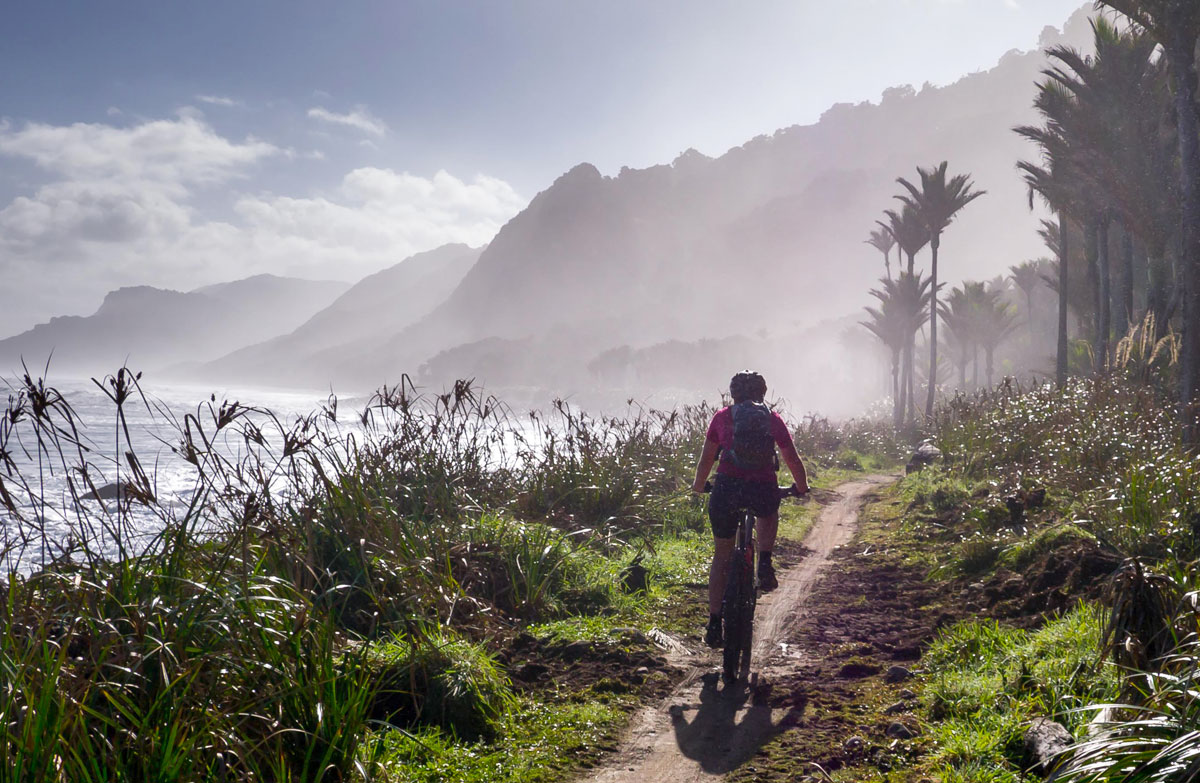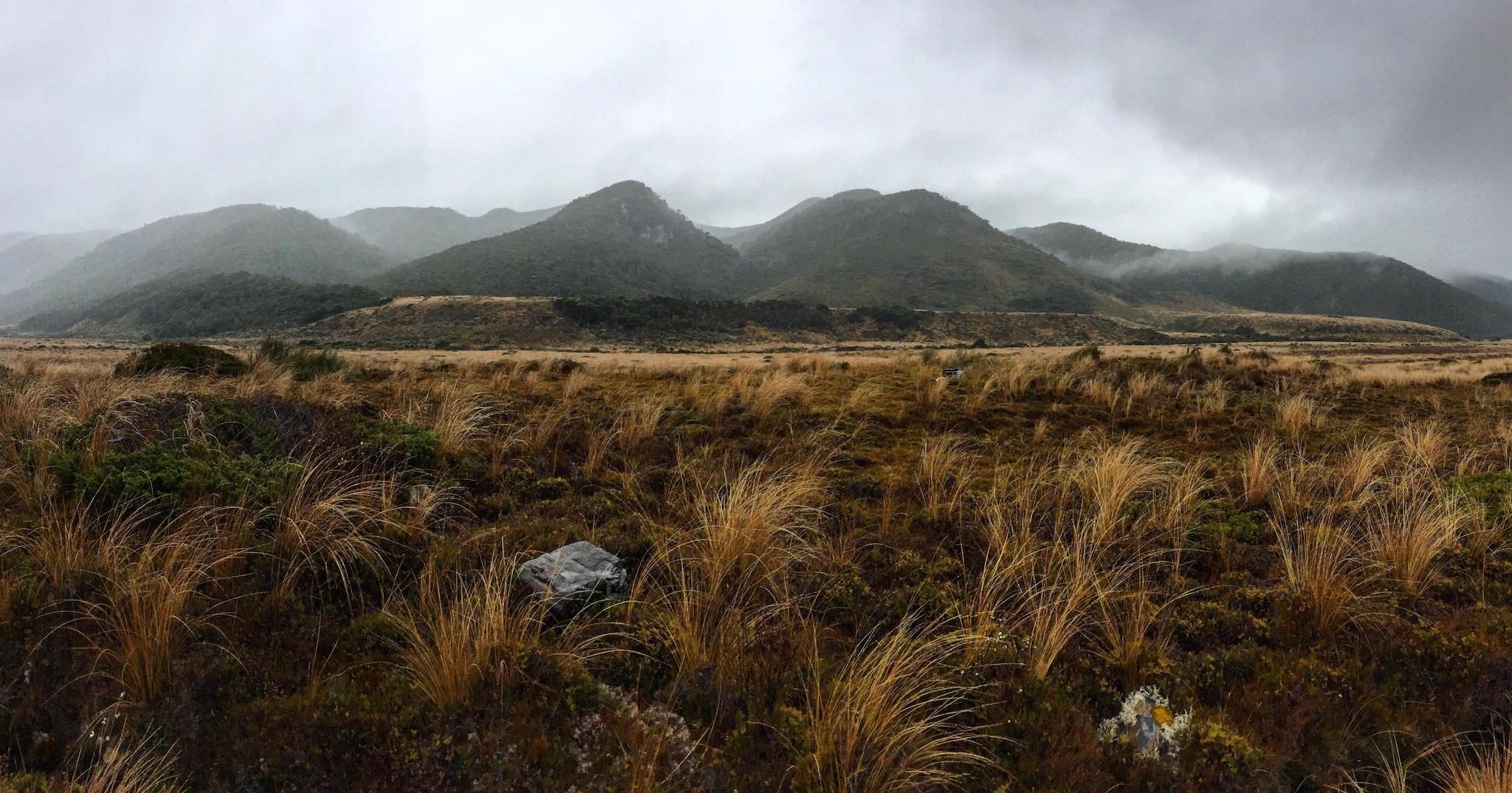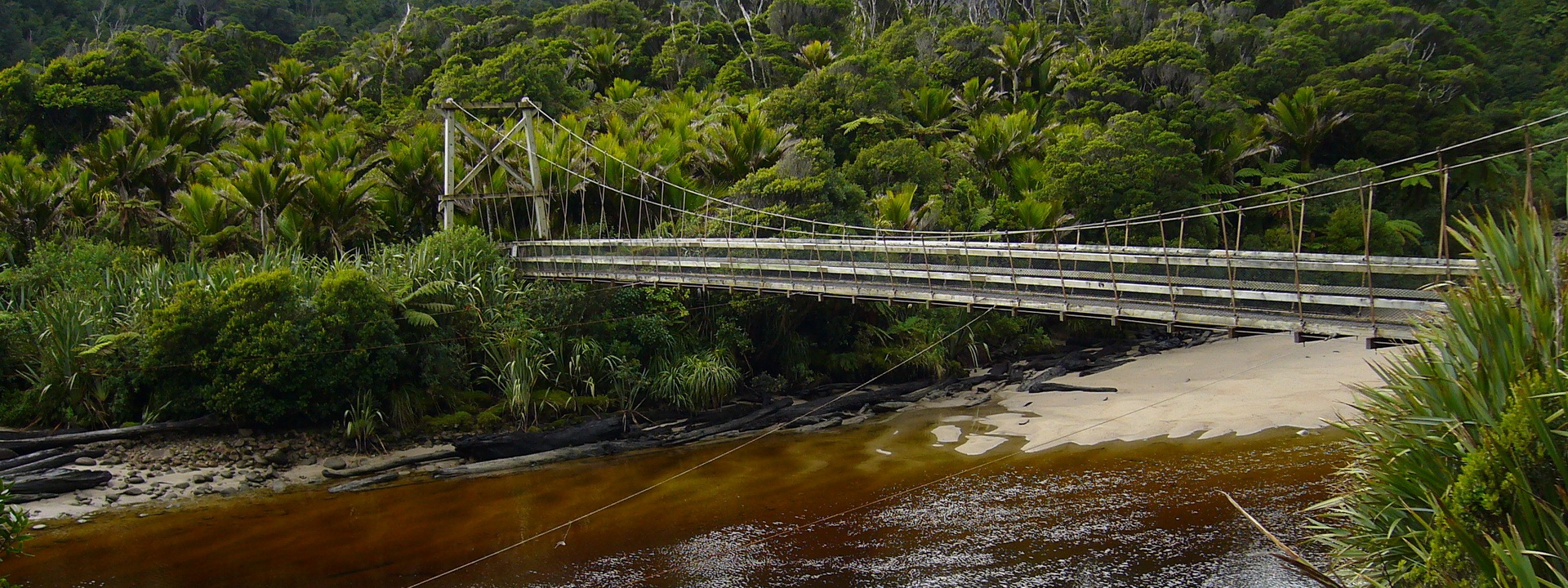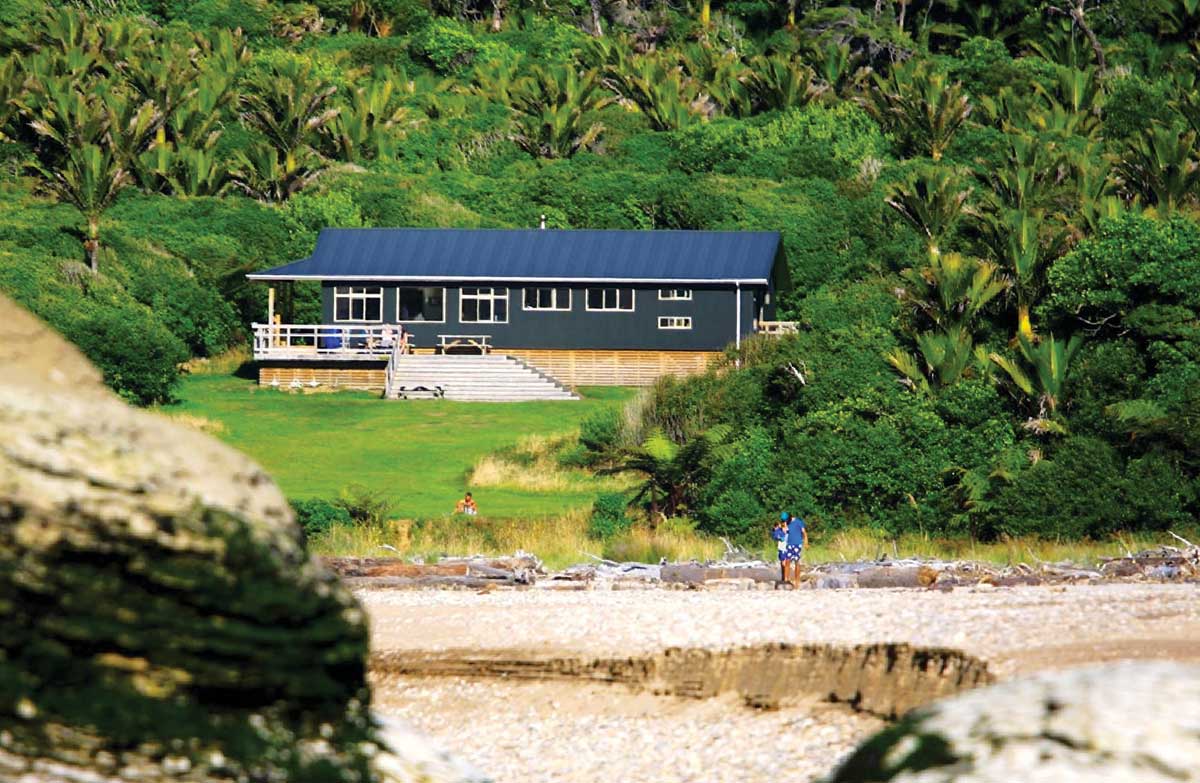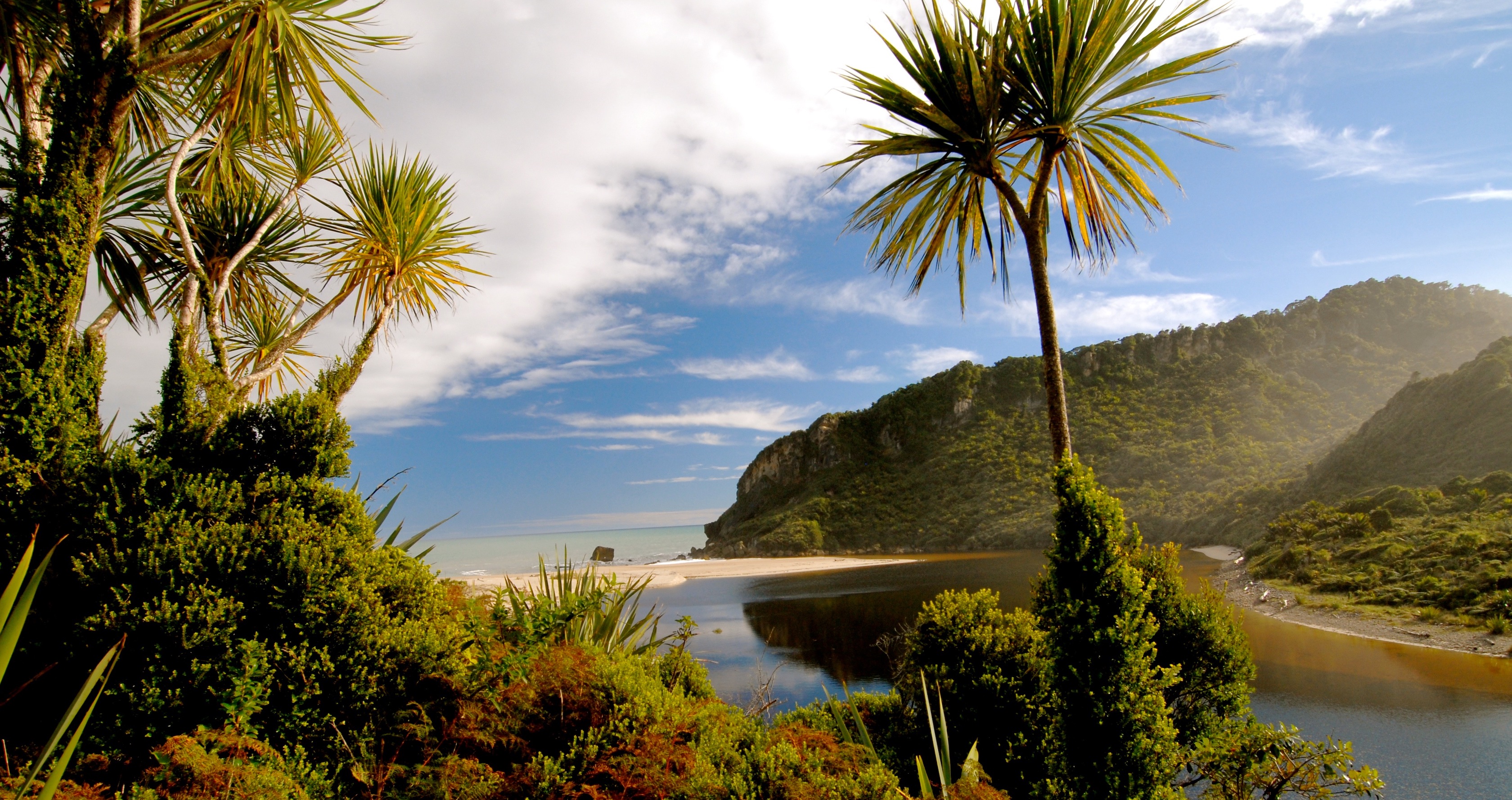Travel through expansive tussock downs, lush forests and nīkau palms to the roaring seas of the West Coast.
- 78.4 km
- 4-7 days
Day 1 17.5 km
Getting to the Heaphy Track
Brown Hut is 156 km and a 2 hr 25 min drive from Nelson. Bus and taxi services are available to reach either end of the track from nearby towns. Both ends of the track have telephones; local calls for transport are free. Regular bus services link Nelson and Westport.
About 180 meters upstream from the track's starting point at Brown Hut, cross the bridge over the Brown River, then a grass flat, before winding up a well-defined track and into the bush. The track climbs gradually, following a route once surveyed for a road.
After 4 hours, Aorere shelter is reached. From here, the Aorere Valley is seen extending northwards and on clear days it is possible to see Mt Taranaki/Egmont. Thirty minutes before Perry Saddle Hut, a short track leads to a viewpoint at Flanagans Corner. At 915 m, this is the highest point on the track.
Perry Saddle Hut
Fare per night during Great Walks season is $70 for New Zealand citizens, $140 for international visitors.
Day 2 7 km
Cross Perry Saddle and sidle above Perry Creek through tussock clearings and patches of beech. Soon the valley widens and the track climbs a small rise to where the Gouland Downs, an open tussock area, is revealed stretching out to the west.
The track meanders easily down to Cave Brook, passing the famed pole to which trampers have tied old boots over the years. Just beyond the brook is Gouland Downs Hut. Nearby, a small patch of beech grows on a limestone outcrop which has escaped erosion. This area is worth exploring. The track crosses one of several limestone arches, which are the remnants of old caves. Nearby, a small waterfall flows out of another cave passage.
Gouland Downs Hut
Fare per night during Great Walks season is $70 for New Zealand citizens, $140 for international visitors.
Day 3 5.4 km
Beyond Gouland Downs Hut the track is relatively level as it crosses the northern part of Gouland Downs. The tussock country and riverbeds make for good exploring but, when the mist lowers, the featureless downs can be confusing and it is easy to become disorientated.
Saxon Hut
Fare per night during Great Walks season is $70 for New Zealand citizens, $140 for international visitors.
Day 4 11.8 km
From Saxon Hut the track drops slightly to grassy flats beside the Saxon River and then climbs gently up to a broad ridge, which joins Gouland Downs to Mackay Downs.
A section on Mackay Downs floods in extremely wet conditions. This is a 70 m piece of the track across a wetland and a bridge. It becomes impassable and quite dangerous. Walkers should wait for the water to recede.
The track now skirts the edge of Mackay Downs to James Mackay Hut, winding in and out of several small streams, just before they tumble off the downs and fall to the Heaphy River on the left. The vegetation is alternately tussock field and shrub-fringed patches of beech forest. Small creeks dissect the landscape and the pink granite sparkles and crunches beneath your feet.
James Mackay Hut
Fare per night during Great Walks season is $70 for New Zealand citizens, $140 for international visitors.
Day 5 12.5 km
Beyond James Mackay Hut, a gradual descent to the Heaphy River begins. The track is through beech forest at first but soon the richer and taller forest typical of the West Coast becomes dominant. Occasional tantalising glimpses of the Heaphy River below are seen through the forest. The sounds of rushing water grow louder and suddenly the hut appears at the junction of the Heaphy River with the smaller Lewis River, along with sandflies and the first nikau palms.
Lewis Hut
Fare per night during Great Walks season is $70 for New Zealand citizens, $140 for international visitors.
Day 6 8 km
From Lewis Hut, head back up the track for a short distance and cross the Heaphy River, via the 148.4 metre suspended deck suspension bridge – the longest ever built by DOC. The track continues along the left bank to the river mouth through a forest of kahikatea, rimu and rata. Glossy-leaved shrubs perch precariously in the tall trees, flourishing in the abundant light and extracting nutrients from humus (accumulated plant debris) in their hosts’ branches.
Towards the river mouth, nikau palms become more common, the sea’s incessant roaring grows louder and, in some conditions, small waves can be seen running upriver. Heaphy Hut is situated far enough back from the sea to be spared the worst of the winds.
Heaphy Hut
Fare per night during Great Walks season is $70 for New Zealand citizens, $140 for international visitors.
Day 7 16.2 km
On your final day the track south to Kohaihai follows the rugged coastline of the West Coast, and passes through forests of rata and karaka trees, vines and groves of nikau palms. Soon Scotts Beach appears. The clearing here is a good spot to rest before climbing over Kohaihai Bluff. The track follows the bank of the Kohaihai River for 400 meters to the car park. At Crayfish Point there is a trach high about the back well away from the sea. Take care crossing Crayfish Stream, particularly after of during rainfall, as it can flood quickly.
There is a risk of wave surge at high tide between Heaphy Hut and Kohaihai. Be prepared to wait for up to 2 hours until the tide retreats. Check tide tables in Heaphy Hut or Kohaihai Shelter.
